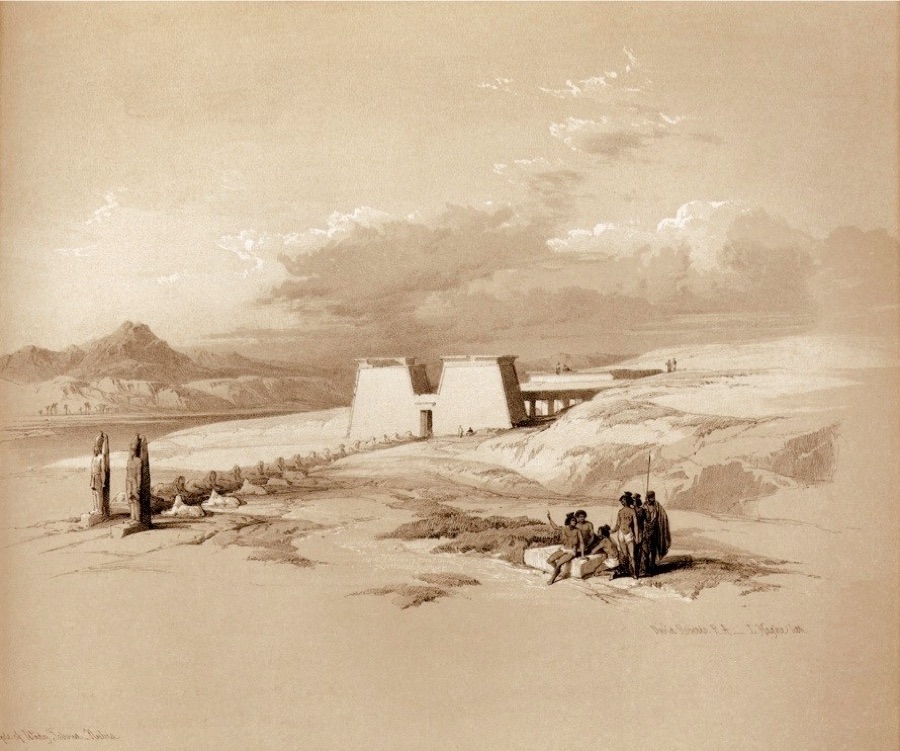APPROACH TO THE TEMPLE OF WADY SABOUA, NUBIA.
THESE ruins are situated on the western bank of the Nile and about five hundred yards from the river, in what, it is highly probable, was formerly a fertile plain; now, deep sands have drifted over it, and buried the portico of the Temple; a few straggling prickly plants are the only signs of vegetation, and not a hut is to be seen around: the smooth surface is undisturbed, except by the trail of the serpent or the tiny footmarks of the lizard: so entirely have the words of prophecy been fulfilled: - “I will make the land of Egypt utterly waste and desolate, from Migdol to Syene, even unto the borders of Ethiopia.”
At a distance, the propylon is imposing, though plain. The most striking feature of the Temple is a long dromos, or avenue, of andro-sphinxes: in their state of mutilation they are supposed by the Nubians to be lions, whence the name Wady Saboua, or “the valley of the lions.” After traversing the short interval from the river, a flight of steps, having on either side a standing colossal figure, about ten or eleven feet in height and twenty feet apart, leads to a broad, and formerly elevated, causeway of hewn stone, one hundred and eighty feet long, which, bounded by the row of sphinxes, continues to the great entrance of the Temple. At the end of the avenue and at the base of the propylon, two statues, larger than those at the entrance, are lying. The material of which the Temple is built is sandstone, much decayed, and the stones are disjointed and displaced; the first effected by the slow action of Time, but the latter seems to have been caused by some sudden natural convulsion.
Roberts’s Journal.


